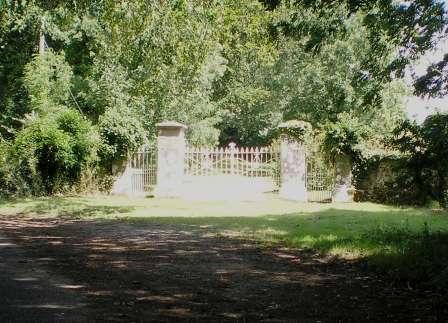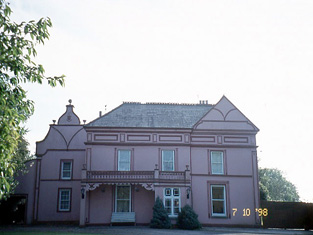Kilmurray House
Houses within 10km of this house
Displaying 16 houses.
Houses within 10km of Kilmurray House
Displaying 16 houses.
| House name | Description | |
|---|---|---|
| Mount Eagle Lodge | Major Fairfield was the owner of Mount Eagle at the time of Griffith's Valuation when it was valued at £10 15s. Bary writes that it was built by him in 1830 and Lewis recorded it as his residence in 1837.The Ordnance Survey Name Books describe it as "a handsome cottage". It was most frequently used as a hunting lodge. Later in the nineteenth century it was the property of Colonel Drummond and resided in by his agent, Mr. Black. In 1906 it was owned by Charles Drummond and valued at £12. The property was eventually sold to the Forestry service in the mid-twentieth century when the house was demolished. | |
| Ballymacadam House | Robert M. Leeson was leasing this property to John Roche at the time of Griffith's Valuation, when it was valued at £13. In the 1830s, the Ordnance Survey Field Name Books record Lady Franks as the owner of the townland and John Roche occupying the house. In 1786 Wilson refers to Ballymacadam as a seat of the Earl of Glandore. Bary states that the house had a number of owners since its construction in the eighteenth century. It is still extant and occupied. |

|
| Crag House or Rockville | Robert Leeson was occupying this property at the time of Griffith's Valuation when the lessor was William Miles. It was then valued at £18 15s. On the 1st edition Ordnance Survey map the house is labelled as Rockville. Bary quotes O'Donovan who claimed the owner in the 1830s was John Marshell Myles. The house is still extant and the well-known Crag Cave complex is located in the demesne. See www.cragcave.com | |
| Castleview House | At the time of Griffith's Valuation, Robert Leeson was leasing this property to Edward Hartnett when it was valued at £11. On the 1st edition Ordnance Survey map it is labelled as Charter School but by the 1893 edition it is named as Castleview House. Bary indicates that the property was originally built in the mid-eighteenth century and operated as a Charter School until the 1820s. Papers relating to its operation as a charter school are included in Ms.17,973 [Quane Papers] in the National Library of Ireland. It was later enlarged by the Hartnett family who occupied it for much of the nineteenth century. It is still extant and occupied. |

|
| Tobermaing House | Robert Chambers was leasing a property which included a mill to James Chambers at the time of Griffith's Valuation, when it was valued at £26 15s. In the 1830s the Ordnance Survey Field Name Books record Lady Franks as the proprietor of this townland and William Bailey as resident in the house. Bary states that the mill was run by the Bailey family and that the property was later owned by the Roche family. In the 1990s it had been converted into a bar and restaurant. | |
| Camp Lodge | At the time of Griffith's Valuation, Richard Chute was leasing this property to George Hewson, when it was valued at £5 10s and part of a farm of 350 acres. In the 1830s, the Ordnance Survey Name Books describe it as "a small cottage, one story high, the residence of John Hussey". It was offered for sale in the Land Judges' Court in 1883 when it was described as a "comfortable dwelling house, suitable for a gentleman's family". Bary indicates that it had been the home of the Twiss family earlier in the nineteenth century. It is still extant. | |
| Mullaghmarky House | Richard Chute was leasing this property to John Sealy at the time of Griffith's Valuation, when it was valued at £10 10s. In the 1830s, the Ordnance Survey Name Books describe it as " a large house, two stories high, with offices, plantation and ornamental garden, the residence of Eusebius Sealy". Bary states that the Sealys had occupied it since the early part of the nineteenth century. It is still extant though not occupied. | |
| Meanus House | Sir David Roche was leasing the property at Meanus to Michael Neligan at the time of Griffith's Valuation, when it was valued at £9 10s. In the 1830s, the Ordnance Survey Field Name Books describe it as "a large house, two stories high with offices attached at present occupied by a farmer". In 1786 Wilson had noted Menus as the seat of Dr. Drew. Bary states that it has been in the Neligan family for many generations and is still extant. | |
| Tullig House | Henry Herbert was leasing this property to William England Young at the time of Griffith's Valuation, when it was valued at £7. In the 1830s, the Ordnance Survey Name Books describe Tullig as "a large house, two stories high, with offices and a garden, the residence of Widow Chute". Earlier, in 1786, Wilson notes Tullig as the seat of Mr. Sandes. Bary states that the house was originally built by the Saunders family and that it later passed to the Brosnan family who have lived here for several generations. Bary also mentions that William E. Young was married to Agnes Sealy and lived at Ballinvariscal House in Novahal parish. | |
| Sandville House | Robert A. Thompson was leasing this property from the Herbert estate at the time of Griffith's Valuation, when it was valued at £11 5s. Bary notes that it had been frequently occupied by agents to the Herbert estate through the nineteenth century. It is believed to have been built by them in the late seventeenth century. The house is still extant and occupied. | |
| Clashganniv House | John Powell was leasing this property from the Herbert estate at the time of Griffithf's Valuation, when it was valued at £10. Let also notes it as his residence in 1814 though he refers to it as Sandville. Bary states that the Powells continued in residence until the early twentieth century. Clashganniv is still extant and occupied. |

|
| Kilcow House | Robert A. Thompson was leasing Kilcow House from the Herbert estate at the time of Griffith's Valuation, when it was valued at £17 10s. Bary notes that the Herbert family lived here for a time in the eighteenth century before moving to Muckross. The house is still extant and occupied. | |
| Annamore House | Maunsell Andrews was leasing this property to Margaret Roche at the time of Griffith's Valuation, when it was valued at £5 5s, on a holding of 170 acres. Barry quotes O'Donovan, who claims the house was built by the Meredith family in the early eighteenth century. It may also have been associated with Lord Northcote's estate. The Roche family occupied the property since the 1840s. | |
| Killeentierna Glebe | Rev. Thomas Herbert owned the Glebe house at Killeentierna at the time of Griffith's Valuation, when it was valued at £18. Bary states that the house was built by Rev. Herbert in 1839 and was later occupied by Arthur Herbert, a land agent, who was assassinated nearby in the 1880s. The house was later used as a Church of Ireland rectory and later still as a presbytery by the local Catholic parish but has since been demolished. | |
| Parkmore House | Rev. C.Moynahan was leasing this property to Arthur Sealy at the time of Griffith's Valuation, when it was valued at £19 5s. Bary quotes O'Donovan who said it was a set of the Meredith family in the 1830s though she also mentions that it was said to have been built by a Fr. Minahan. It was occupied by members of the Meredith family and later by their descendents and is still extant. Richard Meredith was leasing a second property in this townland to Rev. C. Moynahan which was valued at £5 5s. | |
| Ballinvariscal House or Mount Prospect | William Massey was leasing this property from TCD Estates at the time of Griffith's Valuation, when it was valued at £5 15s and part of a holding of over 400 acres. In 1814 it was the residence of Roger Lombard. Bary indicates that the house had several different owners in the nineteenth century when it was known as Mount Prospect. It was sold around 1900 and is still extant and occupied. |

